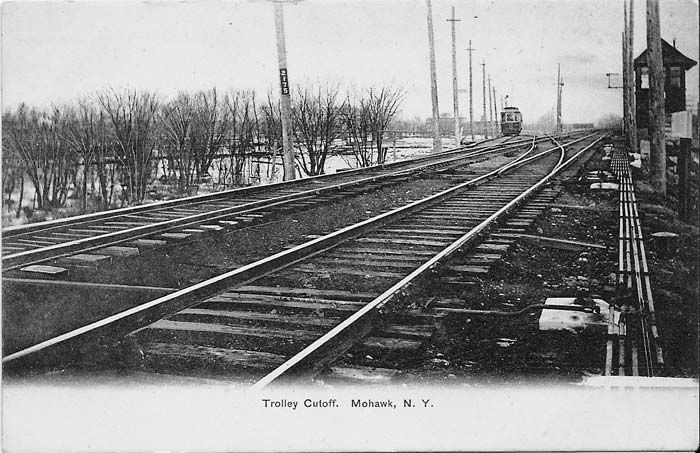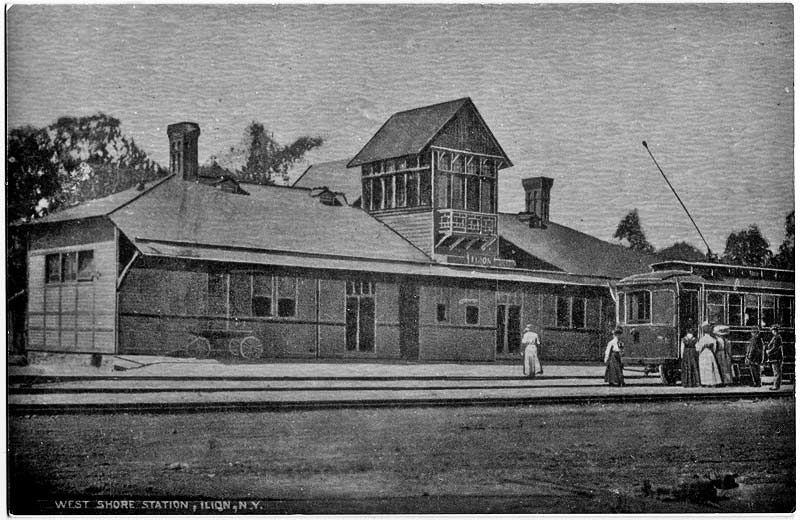|
|
Post by Dave on Jul 23, 2010 8:36:38 GMT -5
Jon's "slice of life" reports do indeed provide vivid detail about life on that street. I think I mentioned that some fifty years ago I'd stand at the pencil sharpener by the window in my junior year of high school and gaze part way down Post St. ... just to get out of doing my assignments. (WsJ No. 90: Cowboy.) I was looking at the back of the Central fire station by then, of course, as well as the backs of businesses that fronted on Elizabeth St. Interestingly, I never knew the history of the street until Jon began to post the stories from the newspapers of that time. Sister Majesterium certainly would have never told me any of it!  |
|
|
|
Post by jon on Jul 23, 2010 9:43:13 GMT -5
ON THE TROLLEY LINES
__________________________
A superficial inspection of the Belt Line extension to Frankfort was made yesterday by Horace E. Anderson, vice president of the company, and John J. Stanley. In only one place has the progress of the company been blocked, the objectors being eight farmers who refuse to concede right of way and against whom condemnation proceedings have been commenced.
Utica will be represented by resident stockholders in the city and suburban electric railway corporation. Two hundred thousand dollars worth of stock will be taken by a syndicate composed of Charles B. Rogers, president of the First National Bank; Charles B. Symonds, president of the City National Bank; Henry W. Miller, W. E. Lewis, Walter N. Kernan, N. E. Devereux, Hon. James S. Sherman, M. Jesse Bryton, N. E. Kernan and W. Pierrepont White.
UTICA SUNDAY JOURNAL - AUGUST 11, 1900
|
|
|
|
Post by jon on Aug 9, 2010 15:32:17 GMT -5
CITY AND COUNTRY FOLK
William A. Williams of 158 West street, Utica, in company with several of his companions, attempted to steal a ride on a street car Tuesday. His left leg went under the wheels and was cut off just below the knee.
ROMAN CITIZEN - JANUARY 28, 1898
|
|
|
|
Post by fiona on Aug 10, 2010 12:52:35 GMT -5
I tried to watch the trolly video, but it kept stalling. However, I got the jist of it. That pedestrians were not yet at ease with all these " new fangeled" contraptions and just ignored them, thought they were something to play with or at, as in the man in the beginning jumping in front of the trolly. People are just casually walking wherever in the road. The trolly conductors must have been grinding there teeth every day. The trolly that ran up Genesee Street was called the Belt Line and I recall seeing the tracks as late as 1963.
|
|
|
|
Post by Dave on Aug 18, 2010 13:17:36 GMT -5
Found on Amazon, by Robert G. Gurley.
|
|
|
|
Post by jon on Aug 18, 2010 21:03:54 GMT -5
 The Utica and Mohawk Valley Railway connected with the West Shore at Mohawk called Mohawk Junction. This part of the West Shore was electrified with an overhead wire, and the West Shore was electrified by Thrid-Rail between Utica and Syracuse. |
|
|
|
Post by jon on Aug 18, 2010 21:18:33 GMT -5
 The Ilion Station The Ilion Station Cars of the Utica & Mohawk Valley used the West Shore between Mohawk and Frankfort, where Ilion is located. |
|
|
|
Post by jon on Aug 18, 2010 21:27:20 GMT -5
 The Ilion Station The Ilion Station Trolley on the Utica and Mohawk Valley Trolley Line and Freight-Cars on the West Shore Railroad. |
|
|
|
Post by jon on Aug 18, 2010 21:35:38 GMT -5
 Frankfort Station Frankfort Station (Bob Purdy Collection) |
|
|
|
Post by Dave on Aug 18, 2010 21:48:59 GMT -5
Pretty neat!
|
|
|
|
Post by jon on Aug 18, 2010 22:07:39 GMT -5
|
|
|
|
Post by fiona on Aug 18, 2010 22:33:23 GMT -5
Jon: that looks like a new photograph. Are those trolly lines?
|
|
|
|
Post by jon on Aug 18, 2010 23:04:13 GMT -5
I was just showing the mess of wires there could be with different lines intersecting. It is a modern photo probably in San Francisco.
|
|
|
|
Post by jon on Aug 19, 2010 19:01:06 GMT -5
New Park to Open Soon
1890 - James Mann, president of the Bleecker Street Railroad, escorts political and civic leaders to his summer retreat, which will henceforth be known as Utica Park. It is at the east end of Bleecker Street and soon electric trolley cars will be carrying hundreds of enthusiastic picnickers, music and animal lovers and sports fans to the park to enjoy summer evenings and weekends.
The park consists of 87 acres, about which one-third is a thickly wooded grove. A large pagoda greets visitors at the main gate where there are ticket offices and covered entrances for pedestrians and carriages. A dance pavilion has a large kitchen and a balcony and scattered about the park are refreshment stands. There are dozens of picnic tables and fireplaces and soon to be completed are a baseball diamond, half-mile driving track and a zoo. All buildings have been designed by Utica architect William H. Symonds.
OBSERVER DISPATCH - JUNE 19, 2010
|
|
|
|
Post by jon on Aug 19, 2010 20:59:29 GMT -5
|
|